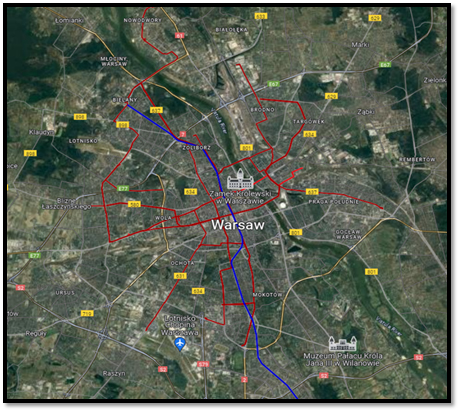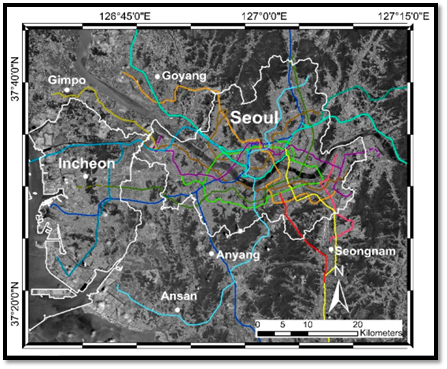Published on 05/27/2025
by Captain William N. Kimmey
On 7 October 2023, the Palestinian militant organization Hamas launched an extensive attack on regions of Israel immediately adjacent to the Gaza Strip. In the months since, the Israeli military has been confounded by the obstacles associated with dense urban combat and a 310-mile network of subterranean paths (roughly half the size of the New York subway system) running beneath Gaza, known as the “Gaza Metro,” which allows Hamas practically unfettered and untraceable movement across the entirety of the Gaza Strip.1 These tunnels—some of which are large enough to support vehicular movement and sufficiently reinforced to prevent significant effects from aerial bombardment—have proven to be a continuous thorn in the side of the Israeli army, with multiple Hamas operations being conducted from within them and Israel painstakingly clearing them at great cost.2 This situation demonstrates how even an isolated, underresourced force can pose monumental challenges to a well-equipped, modernized military. The United States must learn from the difficulties faced by the Israeli army and bolster the urban and subterranean operation acumen of the Engineer Regiment. This can be achieved by incorporating changes to training, education, and force structure as the potential for large-scale combat operations looms over the established and burgeoning megacities of Europe and East Asia.
The challenges that Israel faces with the Hamas tunnel tactics in Gaza are analogous to those that the United States and its allies would likely face should open conflict erupt between the West and Russia, China, or North Korea. Consider the cities of Warsaw, Poland; Seoul, South Korea; and Taipei, Taiwan. Warsaw has a population of 5,510,527 and a 26-mile underground metro network, which it plans to increase to 70 miles by 2050 (Figure 1).3,4 Meanwhile, Seoul has a population of 9,635,445 and a 180-mile underground metro network (Figure 2),6,7 while Taipei has a population of 6,700,000 and an 85-mile underground metro network (Figure 3).8,9 All of these cities lie within striking distance of our adversaries and may even be taken by hostile forces prior to coalition arrival, granting light and motorized enemy forces the ability to harass friendly forces from any direction. As such, it is imperative that the United States prepare to eventually fight in these types of environments. However, the question of how to best prepare the force remains.

Figure 1. Warsaw Metro5

Figure 2. Seoul Metro10

Figure 3. Taipei Metro11
The first step in preparing the force to fight in urban and subterranean environments should be to create a cadre of subject matter experts who can consolidate and further develop current urban and subterranean doctrine. There is presently no concerted effort to develop specialized familiarity or expertise with these forms of warfare. The U.S. Army Training and Doctrine Command (TRADOC) initial-entry training curriculum does not mention these types of tasks, and the Army education portal contains minimal urban breach courses, urban warfare planner courses, and subterranean courses.12 While Army Techniques Publication (ATP) 3-21-51, Subterranean Warfare,13 is current, it is addressed only in the Engineer Basic Officer Leadership Course and the Captain’s Career Course, U.S. Army Engineer School, Fort Leonard Wood, Missouri, and only in an academic sense at surface level, with no real depth. All of this belies the fact that these types of warfare are almost guaranteed to occur—particularly in the case of Taipei, which U.S. forces expect will need to be retaken from People’s Liberation Army forces via counterattack from western Taiwan. As such, TRADOC should establish a school of urban and subterranean warfare (similar to the Army Mountain Warfare School or Combat Diver Qualification Course) and create both a skill badge and an additional skill identifier to enable the tracking of trained individuals across the force. This school should focus on the tactics of urban and subterranean warfare and on the technical aspects of tunnels and how they are evaluated.
The next step should be to provide units training opportunities at their home stations. The Army has established precedent for this; an underground training facility was constructed in the range complex at Fort Bragg, North Carolina,14 and U.S. forces in Korea incorporated subterranean field problems into their Warrior Shield joint exercise.15 Troop construction and contracting support should be used to create new training facilities, with a focus on the U.S. Indo-Pacific Command- and U.S. European Command-facing posts, such as Joint Base Lewis-McChord, Washington; Schofield Barracks, Hawaii; and installations in Germany and Poland. Incorporating troop construction into the effort would also improve the proficiency of construction companies in constructing underground facilities at a time when command and control nodes are frequently targeted and destroyed when exposed.
The final step should be to reorganize the formation to enable companies to specialize in these types of warfare. Urban combat companies should be established by consolidating presently dispersed urban search and rescue platoons under the echelon-above-brigade engineer umbrella and introducing them as identifiable units with established mission-essential task lists within the Army Training Network. In addition, the Army should expand the definitions of the three combat engineer company–infantry mission-essential tasks (supporting mobility, countermobility, and survivability) to include urban- and subterranean-related competencies, with the intent that they support the tasks of defending an urban area in conjunction with an infantry battalion, conducting an attack in an urban area, and conducting an attack of an underground facility in conjunction with a brigade. With the Army of 2030 reduction in the Engineer force, such changes would help alleviate the manpower glut that the Regiment faces, while also granting the Army a reservoir of expertise and capability that it presently lacks.
If we hope to succeed in 21st century conflicts, the United States must learn from the mistakes of Israel and prepare for large-scale combat operations in urban and subterranean environments. While we may be prepared for open-field engagements in the vein of the Battle of Kursk in Russia, the world has urbanized considerably since the end of World War II. Today, 56 percent of the world’s population live in urbanized areas, and that number is even higher in the densely populated regions of Europe and East Asia.16 The United States cannot afford to continue preparing to fight the last war; instead, we must work toward succeeding in the urban and subterranean environments that are likely to define the next. By incorporating additional training, education, and force structure changes, we will be able to do so.
Endnotes:
1Adolfo Arranz et al., “Inside the Tunnels of Gaza: The Scale, and the Sophistication, of Hamas’ Tunnel Network,” Reuters, 31 December 2023, <https://www.reuters.com/graphics/ISRAEL-PALESTINIANS/GAZA-TUNNELS/gkvldmzorvb/>, accessed on 14 January 2025.
2John Spencer, “Underground Nightmare: Hamas Tunnels and the Wicked Problem Facing the IDF,” Modern War Institute at West Point, 17 October 2023, <https://mwi.westpoint.edu/underground-nightmare-hamas-tunnels-and-the-wicked-problem-facing-the-idf/>, accessed on 14 January 2025.
3“Population,” Statistical Office in Warszawa, <https://warszawa.stat.gov.pl/en/>, accessed on 14 January 2025.
4Daniel Tilles, “Warsaw Unveils Plans to More Than Double Size of Metro,” author’s notes from Poland, 14 February 2023, <https://notesfrompoland.com/2023/02/14/warsaw-unveils-plans-to-more-than-double-size-of-metro/>, accessed on 14 January 2025.
5“Warsaw Transit Map,” Google Maps, <https://www.google.com/maps/@52.2383909,21.0343656,27010m/data=!3m1!1e3!5m1!1e2?entry=ttu>, accessed on 14 January 2025.
6“The Statistic of Seoul,” Seoul Solution, <https://www.seoulsolution.kr/en/content/statistic-seoul>, accessed on 14 January 2025.
7“Seoul Metropolitan Subway,” Railway Technology,
30 July 2020, <https://www.railway-technology.com/projects/seoul-metro/>, accessed on 14 January 2025.
8“Civic Life of Cities Lab: Taipei,” Stanford Center on Philanthropy and Civil Society, <https://pacscenter.stanford.edu/research/digital-civil-society-lab/research/civic-life-of-cities-lab/clcl-region-taipei/>, accessed on 14 January 2025.
9“Network and Systems,” Metro Taipei, 2 July 2024, <https://english.metro.taipei/cp.aspx?n=e6f97a6ff9935e98&s=6E5D7E2CB905D981>, accessed on 14 January 2025.
10Muhammad Fulki Fadhillah et al., “Integration of InSAR Time-Series Data and GIS to Assess Land Subsidence along Subway Lines in the Seoul Metropolitan Area, South Korea,” Artificial Intelligence Methods Applied to Urban Remote Sensing and GIS Special Issue, 25 October 2020, <https://www.mdpi
.com/2072-4292/12/21/3505>, accessed on 14 January 2025.
11“Taipei Transit Map,” Google Maps, <https://www.google.com/maps/@25.0551637,121.5661086,27449m/data=!3m1!1e3!5m1!1e2?entry=ttu>, accessed on 14 January 2025.
12TRADOC Pamphlet (Pam) 600-4, The Soldier’s Blue Book, Fort Eustis, Virginia, 13 October 2023.
13ATP 3-21-51, Subterranean Warfare, 1 November 2019.
14Adam Luther, “Tunnel Rats: Warfighters Can Now Train in Subterranean Warfare,” U.S. Army, 1 September 2020, <https://www.army.mil/article/240605/tunnel_rats_warfighters_can_now_train_in_subterranean_warfare>,
accessed on 14 January 2025.
15Rojoef Manuel, “U.S. Army Conducts Underground Tactical Training in South Korea,” The Defense Post, 13 June 2023, <https://www.thedefensepost.com/2023/06/13/us-underground-tactical-training-korea/>, accessed on 14 January 2025.
16“Urban Development,” World Bank Group, <https://www.worldbank.org/en/topic/urbandevelopment/overview>, accessed on 14 January 2025.
Captain Kimmey was a student in the Engineer Captain’s Career Course at the time this article was written. He holds a bachelor’s degree in civil engineering from the U.S. Military Academy–West Point, New York, and a master’s degree in civil engineering from the Missouri University of Science and Technology at Rolla.




